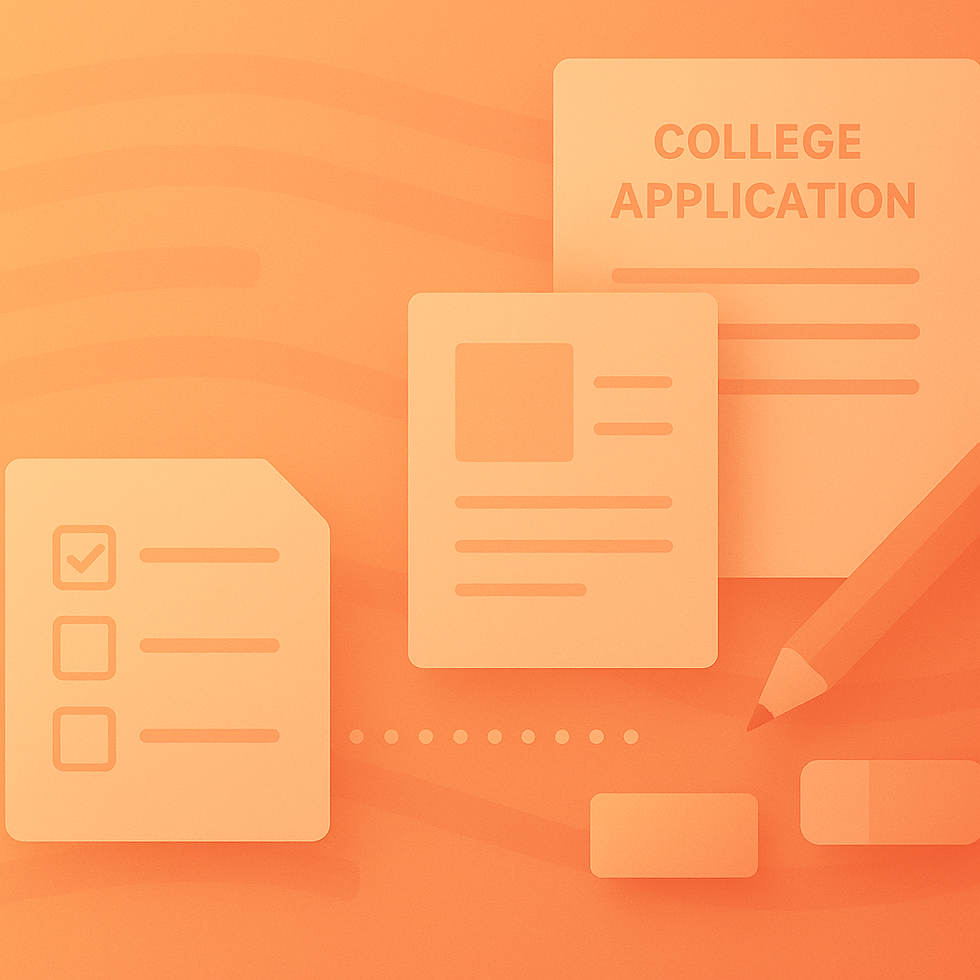A Comprehensive Guide to Planning Your Path to Stanford from Freshman Year to Senior Year
- Jonathan Gamez
- Sep 16
- 4 min read

Entering high school is an exciting time filled with new opportunities and challenges. For students aspiring to attend Stanford University, this journey begins in their freshman year. This guide outlines practical steps to help you navigate your high school years confidently, ensuring success in your Stanford application during senior year.
Understanding Stanford Admissions
Before planning your high school activities, it is essential to grasp what Stanford seeks in its applicants. The university values students who show academic excellence, leadership abilities, and a commitment to their communities. Aim to excel not only in grades but also in personal development and extracurricular engagement.
Setting Academic Goals
Focus on Your GPA
Your academic performance is a cornerstone of your college application. Aim for a GPA of 3.75 or higher—this is competitive for many top universities, including Stanford. Enroll in challenging courses such as honors and Advanced Placement (AP) classes to showcase your academic rigor.
Develop Strong Study Habits
Establish effective study habits early. Consider creating a study schedule that allocates time for each subject daily. Use resources like tutoring or study groups to reinforce your learning. Keep a planner for assignments and deadlines to stay organized.
Seek Help When Needed
If you find a subject challenging, seek help promptly. For instance, if you struggle with math concepts, consider joining a school tutoring program or using online resources like Khan Academy. Remember, asking for help is a strength.
Engaging in Extracurricular Activities
Find Your Passion
Explore various extracurricular activities to discover what truly excites you. Whether it’s sports, music, debate, or volunteering, invest time in activities that spark your enthusiasm. Stats show that students involved in extracurriculars maintain higher GPAs—students engaged in sports often see a GPA boost of 0.2 to 0.5 points.
Take on Leadership Roles
As you progress, look for chances to take on leadership roles. This could mean becoming a team captain, club president, or leading a community service project. Such positions demonstrate initiative and the ability to manage responsibilities—qualities that Stanford values.
Balance is Key
While getting involved is essential, balance your commitments to avoid burnout. Aim to limit your extracurriculars to two or three key activities you are passionate about. Quality over quantity can enhance your personal development and academic performance.
Building Relationships with Teachers
Engage in Class
Be active in class discussions and show genuine interest. Asking questions and sharing insights can help you build rapport with your teachers, which is beneficial when it comes time to request recommendation letters.
Seek Mentorship
Approach teachers for guidance on academic and career interests. For example, if you're interested in environmental science, reach out to your science teacher for insight into relevant projects and opportunities. Their mentorship can significantly impact your growth and success.
Preparing for Standardized Tests
Understand the Testing Landscape
Familiarize yourself with the SAT and ACT formats, as well as any required subject tests. Approximately 90% of students nationwide take the SAT or ACT during their junior year. Knowing the test formats will guide your preparation.
Create a Study Plan
Start preparing for standardized tests early. Develop a study plan incorporating practice tests and review sessions. Include rest periods to avoid burnout. For instance, 30 minutes of focused study followed by a 5-minute break can enhance retention.
Consider Test-Optional Policies
Be aware of changes in test policies. Some colleges, including Stanford, are test-optional. Research whether submitting test scores will bolster your application or whether strong grades and extracurriculars can stand alone.
Cultivating a Strong Personal Narrative
Reflect on Your Experiences
As high school progresses, reflect on your experiences, achievements, and challenges. Write about these moments; they will help you craft a compelling narrative for your college essays. Focus on personal growth, key experiences, and what you learned.
Document Your Journey
Maintain a journal or portfolio documenting your accomplishments and reflections. For example, keep track of volunteer hours, leadership experiences, and relevant projects. This resource will be invaluable when crafting your application materials.
Planning for Senior Year
Create a Timeline
As senior year approaches, develop a timeline for your application process. Mark significant dates, such as standardized test deadlines, college visits, and application due dates. A well-structured timeline will help ease the often hectic senior year.
Focus on Your Application
Spend time creating a thoughtful application. Write strong essays that reflect your voice, gather letters of recommendation in advance, and ensure your resume highlights your achievements. Tailor each component to showcase who you are.
Prepare for Interviews
If Stanford requires an interview, practice your skills. Prepare answers to potential questions and be ready to discuss your interests and experiences confidently. Role-playing with a friend can help you feel more comfortable.
Managing Stress During the Application Process
Stay Organized
Keep your application materials in order. Use checklists to track what you have completed and what is still pending. An organized approach can significantly reduce anxiety as deadlines approach.
Practice Self-Care
Prioritize your mental and physical well-being. Engage in activities that help you relax—such as walking, practicing yoga, or enjoying time with friends and family. Studies show that students who practice self-care have reduced levels of stress.
Seek Support
Reach out to friends, family, or school counselors for support as you navigate the application process. Sharing your feelings can lighten your emotional load and provide different perspectives on your challenges.
Your Path to Stanford
Planning your route to Stanford from freshman year to senior year takes dedication, organization, and a proactive mindset. By focusing on academics, engaging in extracurricular activities, forming connections with teachers, and managing stress, you can approach your high school experience with confidence. Remember, the journey is as significant as the destination. With thoughtful planning and a positive attitude, you will be ready to submit your application to Stanford University.



Comments